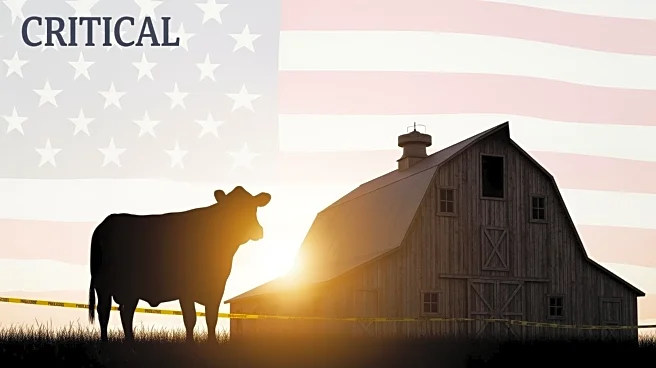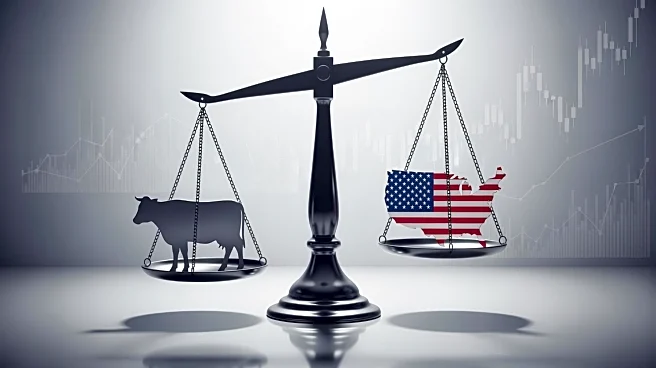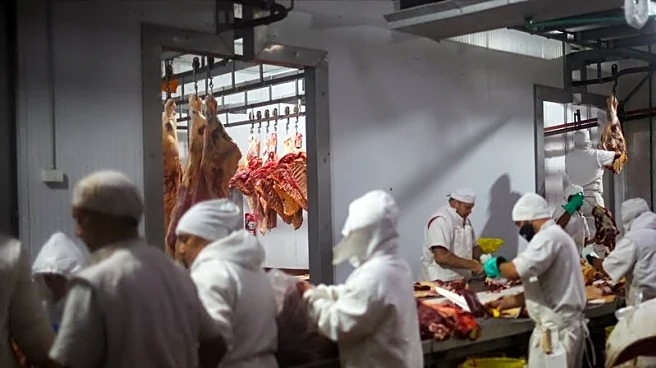What's Happening?
The U.S. cattle market is experiencing significant fluctuations following President Trump's decision to increase low-tariff imports of Argentine beef. The administration has raised the tariff rate quota
to 80,000 metric tons, allowing more Argentine beef to enter the U.S. at a lower duty rate. This move aims to reduce grocery store beef prices, which have reached record highs due to tight cattle supplies. The announcement has led to a drop in feeder cattle prices, with January feeder cattle down $9.25 per hundredweight.
Why It's Important?
The increase in Argentine beef imports is intended to address high consumer prices, but it has sparked backlash from U.S. cattle ranchers who fear the impact on their livelihoods. The decision highlights the tension between government efforts to control consumer prices and the economic well-being of domestic producers. The cattle market's response, including the drop in feeder cattle prices, reflects the uncertainty and potential financial strain on U.S. farmers. This development could lead to broader economic implications for the agricultural sector.
What's Next?
As the market adjusts to the new import levels, stakeholders in the U.S. beef industry may seek to influence policy decisions through lobbying and advocacy. The administration may need to consider additional measures to support domestic producers while balancing consumer interests. Ongoing market analysis and adjustments are expected as the industry navigates the changes brought by increased Argentine beef imports.












